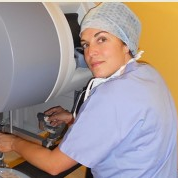Gynecologic Minimally Invasive Surgery: State of the Art
A special issue of Journal of Clinical Medicine (ISSN 2077-0383). This special issue belongs to the section "Obstetrics & Gynecology".
Deadline for manuscript submissions: closed (31 May 2021) | Viewed by 7359
Special Issue Editor
Interests: laparoscopy; robotics; minimally invasive surgery
Special Issues, Collections and Topics in MDPI journals
Special Issue Information
Minimally invasive surgery provides many advantages to our patients. In recent decades, we have observed a gradual evolution of abdominal surgery toward mininvasiveness. Thanks to the development of new instruments and technology, surgery has become less invasive, reducing the number and the dimension of abdominal scars, as well as the indication of radicality.
The aim of the present Special Issue is to present the state of the art for the minimally invasive treatment of benign and malignant gynecologic pathologies.
Dr. Liliana Mereu
Guest Editor
Manuscript Submission Information
Manuscripts should be submitted online at www.mdpi.com by registering and logging in to this website. Once you are registered, click here to go to the submission form. Manuscripts can be submitted until the deadline. All submissions that pass pre-check are peer-reviewed. Accepted papers will be published continuously in the journal (as soon as accepted) and will be listed together on the special issue website. Research articles, review articles as well as short communications are invited. For planned papers, a title and short abstract (about 100 words) can be sent to the Editorial Office for announcement on this website.
Submitted manuscripts should not have been published previously, nor be under consideration for publication elsewhere (except conference proceedings papers). All manuscripts are thoroughly refereed through a single-blind peer-review process. A guide for authors and other relevant information for submission of manuscripts is available on the Instructions for Authors page. Journal of Clinical Medicine is an international peer-reviewed open access semimonthly journal published by MDPI.
Please visit the Instructions for Authors page before submitting a manuscript. The Article Processing Charge (APC) for publication in this open access journal is 2600 CHF (Swiss Francs). Submitted papers should be well formatted and use good English. Authors may use MDPI's English editing service prior to publication or during author revisions.
Keywords
- laparoscopy
- hysteroscopy
- vaginal surgery
- single-site laparoscopy
- minilaparoscopy
- natural orifice endoscopic surgery






